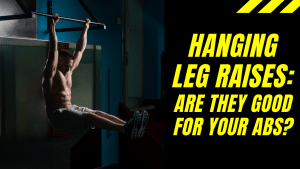Sit-ups techniques and variations for strong and toned abs
Just like crunches, sit-ups have gotten quite a bad rep over the years because of their potential to compromise the spine. But despite their seemingly negative effects, sit-ups remain one of the go-to abs exercises of most beginners. After all, the exercise is relatively simple and convenient, and while it can be quite controversial at times, there is no denying the good that comes with it.
But even though sit-ups are fairly easy, they can be a bit more technical than most people realize. While it is true that this exercise can improve core strength and define the abdominal muscles, not doing them properly can be detrimental to your overall health.
What is a sit-up?
In case you have been living under a rock for the longest time and have no idea what a sit-up is, it is a classic core-strengthening exercise that requires the use of bodyweight to tone and strengthen the abdominal muscles.
This exercise is done by lying on your back and lifting your upper body to target the rectus abdominis, transverse abdominis, and internal and external obliques. The sit-up also works your hip flexors, chest, and neck to a lesser degree. Together, all these muscles are responsible for keeping your torso upright, preventing your spine from collapsing, and helping your neck and hips move with ease.
Although their movements can be quite similar, what sets sit-ups apart from crunches is the muscles activated during the exercise. Crunches heavily focus on the abdominal muscles specifically the upper abs, but sit-ups are a more complete activity since they involve more muscles to accomplish one rep.
Do not be complacent because of its apparent simplicity though. While sit-ups are generally easy to perform, they are also easy to mess up. So if you want to avoid that and ensure that you are making the most out of this exercise, you need to know how to do sit-ups the right way.
How to sit-up
- Begin by lying on your back with your knees bent and your feet firmly planted on the ground.
- Slightly tuck your chin into your chest to lengthen the back of your neck.
- You may either cross your arms in front of you with your hands on opposite shoulders, or put your palms on the sides of your body, but never place your hands behind your head to avoid pushing it too far forward. This puts unnecessary pressure on your neck which may eventually result in injury.
- Lift your upper body towards your thighs and make sure to tighten your core and breathe out as you do this.
- Slowly lower yourself back on the ground while breathing in to return to the starting position.
- Do at least 3 sets of 12 reps each at first, then increase your numbers once you get stronger.
A few tips to ensure effective sit-ups
- One crucial but often overlooked aspect of improving core strength is the breathing technique. Always remember to exhale going up and inhale going down, regardless of the sit-up variation. Also, keep the movement controlled to fully concentrate on engaging the core muscles throughout the exercise.
- In the starting position, your feet should ideally be around 12-18 inches away from your butt. But if you find sitting up difficult in this position, you can further increase the distance between them. This new angle will make sitting up easier while still working your abdominal muscles the same way.
- Lower back pain is often caused by sitting up too fast, so to avoid this, make sure to do the exercise slowly and that only the upper body is lifted as you sit up. Keep your lower back in contact with the floor at all times to avoid excessive strain.
Benefits of doing sit-ups
Stronger core
Aside from a sculpted six-pack, core strength is another common motivation for doing sit-ups. With a toned and strong core, the risk of back pain and injury is reduced and balance and stability are improved, enabling you to move with greater ease as you accomplish day-to-day tasks.
Better posture
A strong and solid core helps maintain the correct alignment of the hips, spine, and shoulders to ensure good posture. Not only does better posture make you look more confident, but it also lessens pain and tension, increases energy levels, and improves breathing.
Improved flexibility
Sit-ups loosen up a stiff spine, making your hips and back more flexible which helps in relieving muscle tension and tightness for better mobility, improved blood circulation, reduced stress, and increased energy levels.
Better athletic performance
Since a strong core improves posture and balance, it allows you to perform better in any sport or physical activity. A strong core is also linked to improved muscular strength and endurance which makes it less likely for you to experience fatigue.
Stronger diaphragm
Surprisingly, sit-ups are also a great way to practice diaphragmatic breathing. Because sit-ups compress the abdominal region, you are not only strengthening the core muscles but the diaphragm as well, which improves breathing and other respiratory functions. And since proper breathing is crucial in most, if not all exercises, a strong diaphragm will always be beneficial.
Sit-ups mistakes to avoid
Stretching the neck too far forward
This is probably the most common mistake that causes people to feel pain when doing sit-ups. When you put your hands behind your head, you tend to unconsciously push it too far forward which can cause long-term damage to your neck and spine.
Dropping your back
This mistake happens when you are unable to control the movement during the lowering portion of the exercise, and your inability to control the movement is usually caused by a weak and exhausted core.
When you do sit-ups too fast, the core easily gets tired so your back tends to arch, and when this happens, your lumbar spine doesn’t come into contact with the ground anymore to compensate for the rapid movement.
As a result, you drop your upper back with too much force, which not only causes back pain but also bruises your tailbone that may result in more serious injuries in the future.
Relying on the hips too much
The primary movers in a sit-up are the abs and hip flexors, but for people with already tight hip flexors—which are most people—they may unintentionally recruit those muscles more during the upward phase instead of the abs. Always remember that to effectively target the core, the abdominal muscles should be more involved than the hip flexors.
Sit-ups variations to try
Straight leg sit-ups
- Get to the starting position by lying down on the ground with your legs stretched out and hip-width apart, and your hands extended above your head.
- Lift your torso to get into a sitting position. Keep your hands extended above your head as you do this.
- Slowly lower yourself to return to the starting position.
Weighted sit-ups
- Get to the starting position by sitting down with your legs hip-width apart, feet flat on the ground, back straight, and shoulders retracted.
- Hold either a dumbbell or a weight plate with both hands and bring it just above your head with slightly bent elbows.
- Slowly lower yourself and make sure your spine is flat on the ground with your hands still above your head.
- Lift your torso until you get into a sitting position. Maintain a straight back and keep your legs on the floor.
- Slowly lower yourself to return to the starting position.
Ball sit-ups
- Begin by sitting on a stability ball with your feet flat on the ground.
- Lean back so your shoulders, back, and tailbone are on the ball.
- Walk your legs out so your knees are directly above your ankles and your thighs parallel to the floor.
- Put your hands at the sides of your head with your fingers barely touching your ears.
- Tighten your core then lift your torso off the ball and towards your thighs.
- Slowly lower yourself back on the ball.
Elbow-to-knee sit-ups
- Begin by lying flat on the ground with your hands at the sides of your head just barely touching your ears.
- Lift your legs off the ground then bend your knees.
- Rotate your torso to bring your right elbow towards your left knee.
- As you do this, extend the right leg to make it parallel to the floor.
- Repeat according to your desired number of reps then perform the exercise on the other side.
Butterfly sit-ups
- Begin by sitting down with your knees bent and your feet flat on the ground.
- Open your thighs and press the soles of your feet against each other.
- Lower yourself on the ground and extend your hands above your head.
- Lift your torso to get into a sitting position and bring your hands forward to reach your toes.
- Slowly lower yourself to return to the starting position.



